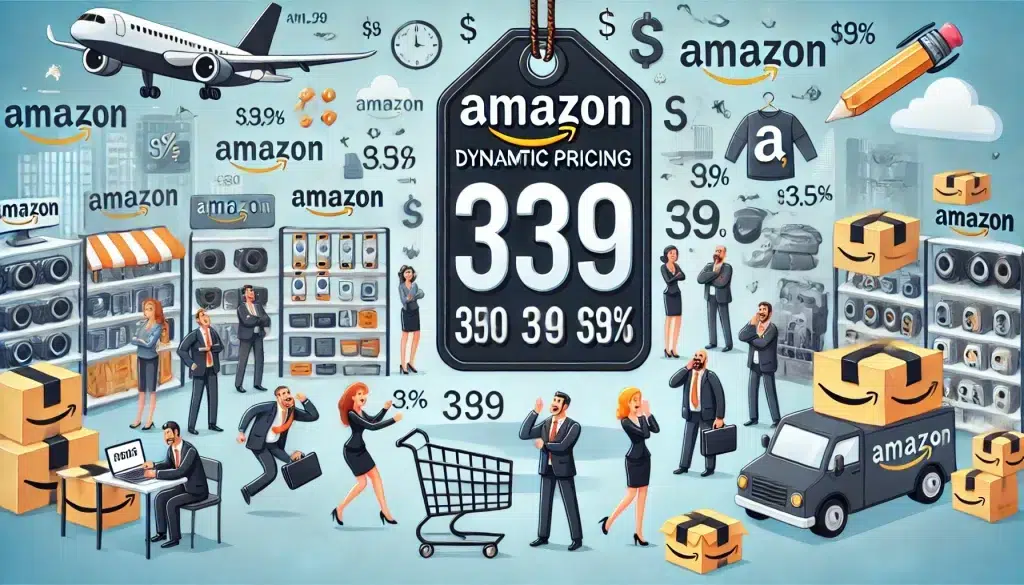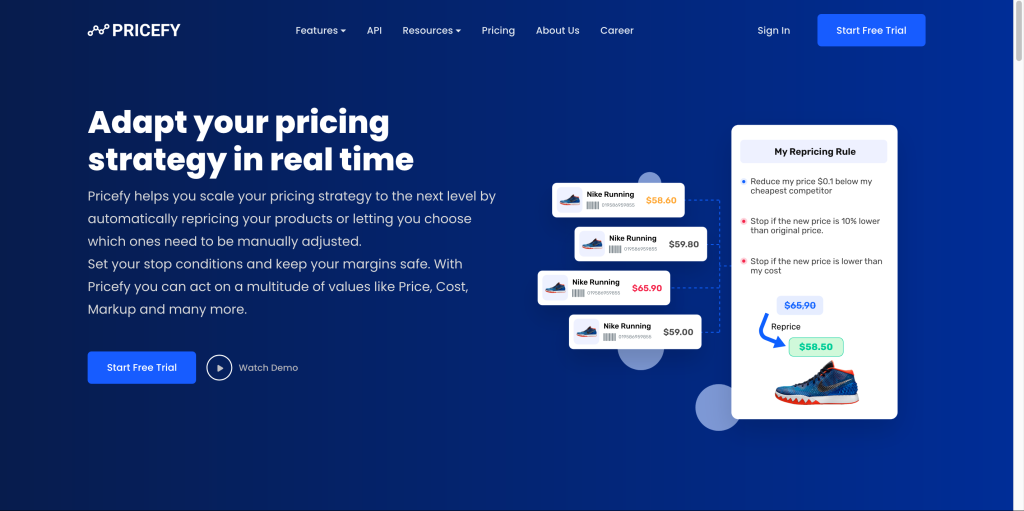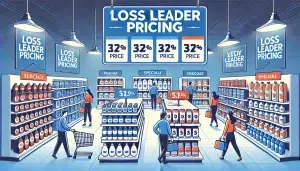
Amazon, the e-commerce giant, leverages real-time data analytics and dynamic pricing to dynamically adjust prices across millions of products. This sophisticated pricing strategy allows Amazon to maximize profits while maintaining competitiveness in the fast-paced online retail market.
By analyzing various factors such as competitor prices, demand trends, and inventory levels, Amazon‘s algorithm makes instant pricing decisions that optimize revenue and customer satisfaction.
Table of Contents:
- Introduction to Amazon’s Pricing Strategy
- Key Data Points Used in Price Adjustments
- Amazon’s Real-Time Pricing Algorithm
- Benefits of Dynamic Pricing
- Challenges and Criticisms
- Impact on the E-commerce Industry
- How You Can Do the Same with Pricefy
- Conclusion
- FAQ
1. Introduction to Amazon’s Pricing Strategy

Amazon‘s dynamic pricing strategy is a cornerstone of its business model. The company uses advanced algorithms and machine learning to analyze vast amounts of data in real-time, allowing it to adjust prices up to every 10 minutes.
This approach enables Amazon to:
- Respond quickly to market changes
- Optimize profit margins
- Attract price-sensitive customers
- Stay ahead of competitors
2. Key Data Points Used in Price Adjustments
Amazon’s pricing algorithm considers numerous factors when making pricing decisions:
- Competitor prices
- Product demand
- Customer browsing and purchase history
- Inventory levels
- Shipping costs
- Time of day and seasonality
- External events (e.g., holidays, major sales events)
3. Amazon’s Dynamic Pricing Algorithm
The heart of Amazon‘s pricing strategy is its sophisticated algorithm. Here’s how it works:
- Data Collection: Continuously gather relevant data points
- Analysis: Process the data using machine learning models
- Decision Making: Determine optimal price based on predefined rules and goals
- Implementation: Automatically update prices on the platform
- Monitoring: Track the impact of price changes and feed results back into the system
4. Benefits of Dynamic Pricing
Amazon’s real-time pricing strategy offers several advantages:
- Increased revenue and profit margins
- Better inventory management
- Improved competitiveness
- Enhanced customer loyalty through perceived value
- Ability to capitalize on peak demand periods
5. Challenges and Criticisms
Despite its effectiveness, Amazon’s pricing strategy faces some challenges:
| Challenge | Description |
|---|---|
| Price Perception | Frequent changes may confuse or frustrate customers |
| Fairness Concerns | Different prices for the same item can be seen as discriminatory |
| Technical Complexity | Maintaining and improving the algorithm requires significant resources |
| Regulatory Scrutiny | Dynamic pricing practices may attract attention from regulators |
6. Impact on the E-commerce Industry
Amazon’s success with dynamic pricing has influenced the entire e-commerce sector:
- Increased adoption of similar strategies by competitors
- Greater emphasis on data analytics in retail
- Shift towards more flexible and responsive pricing models
- Growing importance of AI and machine learning in business operations
7. Dynamic Pricing With Pricefy

While Amazon‘s pricing strategy may seem out of reach for smaller businesses, tools like Pricefy make it possible to implement similar dynamic pricing strategies.
Pricefy offers a user-friendly platform that allows businesses of all sizes to harness the power of real-time data and AI-driven pricing decisions.
With Pricefy, you can:
- Monitor competitor prices in real-time
- Analyze market trends and demand patterns
- Set up custom pricing rules based on your business goals
- Automatically adjust prices across multiple sales channels
- Generate insights to inform your overall pricing strategy
The platform’s scalable solutions ensure that businesses can start small and grow their dynamic pricing capabilities as they expand.
8. Conclusion
Amazon‘s use of real-time data to adjust prices exemplifies the power of data-driven decision-making in modern e-commerce.
By continuously analyzing market conditions and consumer behavior, Amazon maintains its competitive edge while maximizing profits. As technology advances, we can expect even more sophisticated pricing strategies to emerge, further transforming the retail landscape.
With tools like Pricefy, businesses of all sizes can now implement similar strategies, making dynamic pricing more accessible than ever before.
9. FAQ
- Q: How often does Amazon change its prices?
A: Amazon can adjust prices as frequently as every 10 minutes, depending on various factors. - Q: Does Amazon always offer the lowest price?
A: Not always. Amazon’s algorithm balances competitiveness with profitability, so prices may not always be the lowest. - Q: Can customers take advantage of Amazon’s dynamic pricing?
A: Savvy shoppers can use price tracking tools to monitor fluctuations and time their purchases accordingly. - Q: Is Amazon’s pricing strategy legal?
A: Dynamic pricing is generally legal, but it must comply with antitrust and consumer protection laws. - Q: Do all products on Amazon use dynamic pricing?
A: While many products are subject to dynamic pricing, not all items on the platform use this strategy.
Useful Links:




